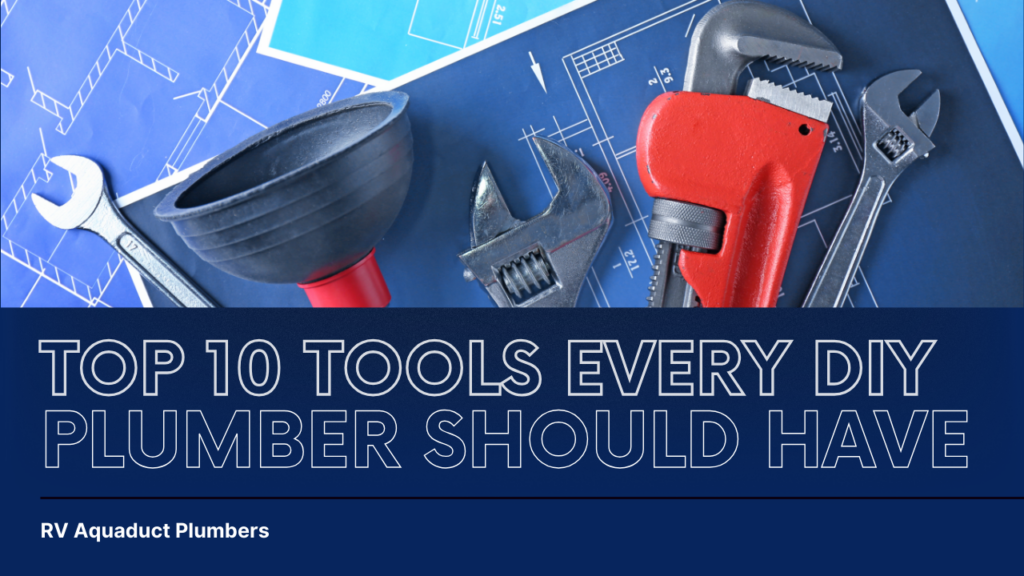The Top 10 Tools Every DIY Plumber Should Have

When it comes to DIY plumbing, having the right tools at your disposal can make all the difference between a successful repair and a frustrating ordeal. Whether you’re tackling a leaky faucet, a clogged drain, or a more complex plumbing project, having the essential tools can save you time, money, and stress. In this guide, we’ll walk you through the top 10 tools that every DIY plumber should have in their toolkit.
Pipe Wrench: A pipe wrench is a must-have tool for any plumber, professional or DIY. It’s designed to grip and turn pipes and fittings, making it essential for tasks like tightening or loosening threaded pipes.
Adjustable Wrench: An adjustable wrench, also known as a crescent wrench, is versatile and perfect for turning hexagonal nuts and bolts. Its adjustable jaw width makes it suitable for various plumbing fittings.
Plunger: A plunger is the hero of clogged drains. It’s a simple yet effective tool for dislodging blockages in sinks, toilets, and showers. Make sure to have a cup plunger for sinks and a flange plunger for toilets.
Pipe Cutter: When you need to cut through copper or plastic pipes, a pipe cutter is indispensable. It ensures clean, precise cuts without the need for saws or hacksaws.
Pipe Tape (Teflon Tape): Also known as Teflon tape, this handy tool is used to seal threaded pipe connections, preventing leaks. It’s an inexpensive but crucial item for any plumbing project involving threaded fittings.
Hacksaw: A hacksaw is helpful for cutting through metal pipes and other materials when a pipe cutter won’t do the trick. It’s a versatile tool that can be used for a variety of DIY projects.
Plumber’s Putty: Plumber’s putty is a sealant used to create watertight seals around fixtures like sinks and drains. It’s pliable and easy to work with, making it ideal for DIY plumbers.
Pipe Wrench Pliers: These specialized pliers are designed for gripping and turning pipes and fittings in tight spaces where a full-size pipe wrench may not fit.
Tubing Cutter: If you’re working with copper tubing, a tubing cutter is essential. It produces clean, burr-free cuts in copper pipes, ensuring a secure fit for connectors.
Basin Wrench: When you need to reach and tighten nuts and bolts in hard-to-reach places, a basin wrench is the tool for the job. It’s particularly handy for working under sinks.
Having these essential tools in your DIY plumbing arsenal will give you the confidence and capability to tackle a wide range of plumbing tasks. Before starting any project, always remember to turn off the water supply and take safety precautions. If you’re ever unsure about a plumbing issue or feel uncomfortable with a repair, don’t hesitate to call a professional plumber to ensure the job is done correctly and safely.
Remember, while DIY plumbing can be rewarding and cost-effective, it’s essential to know your limits and when to seek professional assistance. With the right tools and knowledge, you’ll be well-prepared to handle many common plumbing issues in your home. Happy plumbing!